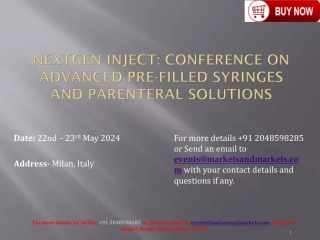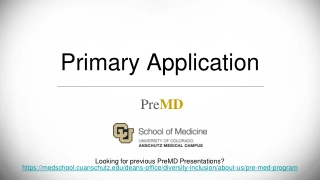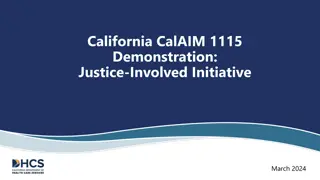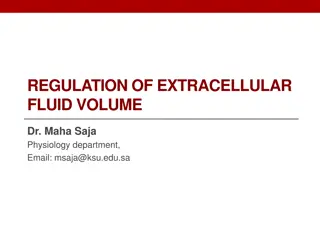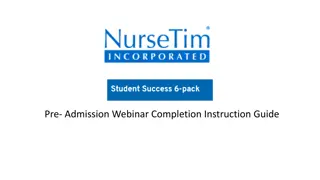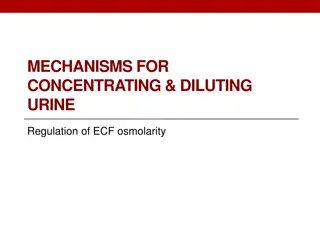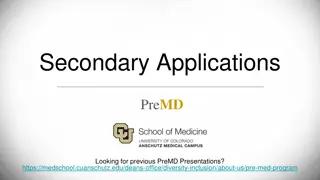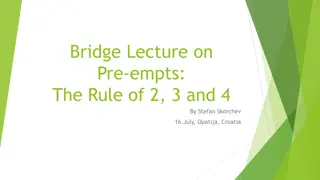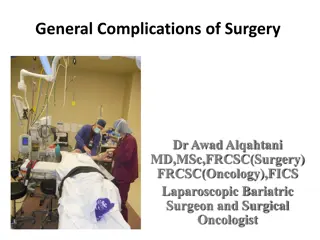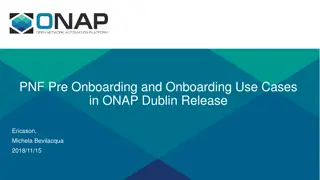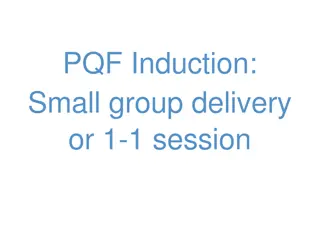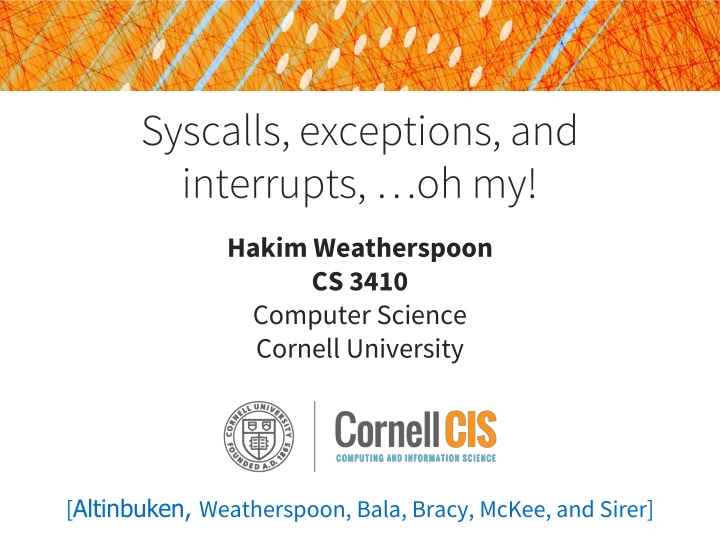
Syscalls, Exceptions, and Interrupts in Computer Systems
Explore the world of syscalls, exceptions, and interrupts in computer systems through the lens of protecting processes and the operating system. Learn how CPUs handle exceptional conditions and the role of the operating system in managing software and hardware resources effectively.
Download Presentation

Please find below an Image/Link to download the presentation.
The content on the website is provided AS IS for your information and personal use only. It may not be sold, licensed, or shared on other websites without obtaining consent from the author. If you encounter any issues during the download, it is possible that the publisher has removed the file from their server.
You are allowed to download the files provided on this website for personal or commercial use, subject to the condition that they are used lawfully. All files are the property of their respective owners.
The content on the website is provided AS IS for your information and personal use only. It may not be sold, licensed, or shared on other websites without obtaining consent from the author.
E N D
Presentation Transcript
Syscalls, exceptions, and interrupts, oh my! Hakim Weatherspoon CS 3410 Computer Science Cornell University [Altinbuken, Weatherspoon, Bala, Bracy, McKee, and Sirer]
Announcements P4-Buffer Overflow is due tomorrow Due Tuesday, April 16th C practice assignment Due Friday, April 19th Due Friday, April 27th
Outline for Today How do we protect processes from one another? Skype should not crash Chrome. How do we protect the operating system (OS) from other processes? Chrome should not crash the computer! How does the CPU and OS (software) handle exceptional conditions? Division by 0, Page Fault, Syscall, etc. 3
Outline for Today How do we protect processes from one another? Skype should not crash Chrome. Operating System How do we protect the operating system (OS) from other processes? Chrome should not crash the computer! Privileged Mode How does the CPU and OS (software) handle exceptional conditions? Division by 0, Page Fault, Syscall, etc. Traps, System calls, Exceptions, Interrupts 4
Operating System
Operating System Manages all of the software and hardware on the computer. Many processes running at the same time, requiring resources CPU, Memory, Storage, etc. The Operating System multiplexes these resources amongst different processes, and isolates and protects processes from one another! 6
Operating System Operating System (OS) is a trusted mediator: Safe control transfer between processes Isolation (memory, registers) of processes P1 P2 P3 P4 untrusted software VM filesystem net driver driver trusted OS MMU CPU disk netw hardware card 7
Outline for Today How do we protect processes from one another? Skype should not crash Chrome. Operating System How do we protect the operating system (OS) from other processes? Chrome should not crash the computer! Privileged Mode How does the CPU and OS (software) handle exceptional conditions? Division by 0, Page Fault, Syscall, etc. Traps, System calls, Exceptions, Interrupts 8
Privileged (Kernel) Mode
One Brain, Many Personalities You are what you execute. Personalities: hailstone_recursive Microsoft Word Minecraft Linux yes, this is just software like every other program that runs on the CPU Brain Are they all equal? 10
Trusted vs. Untrusted Only trusted processes should access & change important things Editing TLB, Page Tables, OS code, OS sp, OS fp If an untrusted process could change the OS sp/fp/gp/etc., OS would crash! 11
Privileged Mode CPU Mode Bit in Process Status Register Many bits about the current process Mode bit is just one of them Mode bit: 0 = user mode = untrusted: Privileged instructions and registers are disabled by CPU 1 = kernel mode = trusted All instructions and registers are enabled 12
Privileged Mode at Startup 1. Boot sequence load first sector of disk (containing OS code) to predetermined address in memory Mode 1; PC predetermined address 2. OS takes over initializes devices, MMU, timers, etc. loads programs from disk, sets up page tables, etc. Mode 0; PC program entry point - User programs regularly yield control back to OS 13
Users need access to resources If an untrusted process does not have privileges to use system resources, how can it Use the screen to print? Send message on the network? Allocate pages? Schedule processes? 14
System Call Examples putc(): Print character to screen Need to multiplex screen between competing processes send(): Send a packet on the network Need to manipulate the internals of a device sbrk(): Allocate a page Needs to update page tables & MMU sleep(): put current prog to sleep, wake other Need to update page table base register 15
System Calls System calls called executive calls (ecall) in RISC-V System call: Not just a function call Don t let process jump just anywhere in OS code OS can t trust process registers (sp, fp, gp, etc.) ECALL instruction: safe transfer of control to OS RISC-V system call convention: Exception handler saves temp regs, saves ra, but: a7 = system call number, which specifies the operation the application is requesting 16
User Application printf() User Mode System Call Interface Privileged (Kernel) Mode SYSCALL! top 0xfffffffc printf.c Implementation of printf() syscall! system reserved 0x80000000 0x7ffffffc stack dynamic data (heap) static data .data 0x10000000 code (text) .text 0x00400000 bottom 0x00000000 system reserved 17
Libraries and Wrappers Compilers do not emit SYSCALL instructions Compiler doesn t know OS interface Libraries implement standard API from system API libc (standard C library): getc() ecall sbrk() ecall write() ecall gets() getc() printf() write() malloc() sbrk() 18
Invoking System Calls char *gets(char *buf) { while (...) { buf[i] = getc(); } } int getc() { asm("addi a7, 0, 4"); asm( ecall"); } 19
Anatomy of a Process, v1 0xfffffffc system reserved 0x80000000 0x7ffffffc stack dynamic data (heap) ?? 0x10000000 static data code (text) (user) gets (library) getc 0x00400000 0x00000000 20 system reserved
Where does the OS live? In its own address space? Syscall has to switch to a different address space Hard to support syscall arguments passed as pointers . . . So, NOPE In the same address space as the user process? Protection bits prevent user code from writing kernel Higher part of virtual memory Lower part of physical memory . . . Yes, this is how we do it. 21
Anatomy of a Process 0xfffffffc top system reserved 0x80000000 0x7ffffffc stack dynamic data (heap) .data 0x10000000 static data .text code (text) 0x00400000 0x00000000 bottom 22 system reserved
Full System Layout All kernel text & most data: At same virtual address in every address space OS Stack 0xfffffffc OS Heap OS Data OS Text 0x80000000 0x7ffffffc OS is omnipresent, available to help user-level applications Typically in high memory stack dynamic data (heap) 0x10000000 static data code (text) 0x00400000 system reserved 0x00000000 23
Full System Layout OS Stack 0xfffffffc OS Heap OS Data OS Text 0x80000000 0x7ffffffc stack OS Stack dynamic data (heap) 0x10000000 static data OS Heap OS Data code (text) 0x00400000 OS Text system reserved 0x00000000 0x00...00 Virtual Memory Physical Memory 24
Anatomy of a Process, v2 0xfffffffc system reserved implementation of getc() syscall 0x80000000 0x7ffffffc stack dynamic data (heap) 0x10000000 static data gets getc code (text) 0x00400000 0x00000000 25 system reserved
Inside the ECALL instruction ECALL is s SYSCALL in RISC-V ECALL instruction does an atomic jump to a controlled location (i.e. RISC-V 0x8000 0180) Switches the sp to the kernel stack Saves the old (user) SP value Saves the old (user) PC value (= return address) Saves the old privilege mode Sets the new privilege mode to 1 Sets the new PC to the kernel syscall handler 26
Inside the ECALL implementation Kernel system call handler carries out the desired system call Saves callee-save registers Examines the syscall ecall number Checks arguments for sanity Performs operation Stores result in a0 Restores callee-save registers Performs a supervisor exception return (SRET) instruction, which restores the privilege mode, SP and PC 27
Takeaway It is necessary to have a privileged (kernel) mode to enable the Operating System (OS): provides isolation between processes protects shared resources provides safe control transfer 28
Outline for Today How do we protect processes from one another? Skype should not crash Chrome. Operating System How do we protect the operating system (OS) from other processes? Chrome should not crash the computer! Privileged Mode How does the CPU and OS (software) handle exceptional conditions? Division by 0, Page Fault, Syscall, etc. Traps, System calls, Exceptions, Interrupts 29
Exceptional Control Flow Anything that isn t a user program executing its own user-level instructions. System Calls: just one type of exceptional control flow Process requesting a service from the OS Intentional it s in the executable! 30
Software Exceptions Fault Unintentional but Possibly recoverable Examples: Division by zero Page fault Abort Unintentional Not recoverable Examples: Parity error Trap Intentional Examples: System call (OS performs service) Breakpoint traps Privileged instructions One of many ontology / terminology trees. 31
Hardware support for exceptions SEPC register Supervisor Exception Program Counter or SEPC 32-bit register, holds addr of affected instruction Syscall case: Address of ECALL SCAUSE register Supervisor Exception Cause Register or SCAUSE Register to hold the cause of the exception Syscall case: 8, Sys Special instructions to load TLB Only do-able by kernel 33
Hardware support for exceptions SEPC Code Stored in Memory (also, data and stack) SCAUSE compute jump/branch targets x0 x1 A memory register file x30 x31 D D alu B +4 addr inst PC din dout M control B memory imm extend new pc forward unit detect hazard Stack, Data, Code Stored in Memory Instruction Decode Write - Back Instruction Fetch ctrl ctrl ctrl Memory Execute 34 IF/ID ID/EX EX/MEM MEM/WB
Hardware support for exceptions Precise exceptions: Hardware guarantees (similar to a branch) Previous instructions complete Later instructions are flushed SEPC and SCAUSE register are set Jump to prearranged address in OS When you come back, restart instruction Disable exceptions while responding to one - Otherwise can overwrite SEPC and SCAUSE 35
Exceptional Control Flow AKA Exceptions Hardware interrupts Asynchronous = caused by events external to CPU Software exceptions Synchronous = caused by CPU executing an instruction Unmaskable Cannot be ignored Example: alert from the power supply that electricity is about to go out Maskable Can be turned off by CPU Example: alert from network device that a packet just arrived, clock notifying CPU of clock tick 36
Interrupts & Unanticipated Exceptions No ECALL instruction. Hardware steps in: Saves PC of supervisor exception instruction (SEPC) Saves cause of the interrupt/privilege (Cause register) Switches the sp to the kernel stack Saves the old (user) SP value Saves the old (user) PC value Saves the old privilege mode Sets the new privilege mode to 1 Sets the new PC to the kernel syscall hander interrupt/exception handler SYSCALL 37
Inside Interrupts & Unanticipated Exceptions interrupt/exception handler handles event Kernel system call handler carries out system call all Saves callee-save registers Examines the syscall number cause Checks arguments for sanity Performs operation Stores result in a0 Restores callee-save registers Performs a SRET instruction (restores the privilege mode, SP and PC) all 38
Address Translation: HW/SW Division of Labor Virtual physical address translation! Hardware has a concept of operating in physical or virtual mode helps manage the TLB raises page faults keeps Page Table Base Register (PTBR) and ProcessID Software/OS manages Page Table storage handles Page Faults updates Dirty and Reference bits in the Page Tables keeps TLB valid on context switch: Flush TLB when new process runs (x86) Store process id (MIPS) 39
Demand Paging on RISC-V 1. TLB miss 2. Trap to kernel 3. Walk Page Table 4. Find page is invalid 5. Convert virtual address to file + offset 6. Allocate page frame Evict page if needed 7. Initiate disk block read into page frame 8. Disk interrupt when DMA complete 9. Mark page as valid 10. Load TLB entry 11. Resume process at faulting instruction 12. Execute instruction 40

